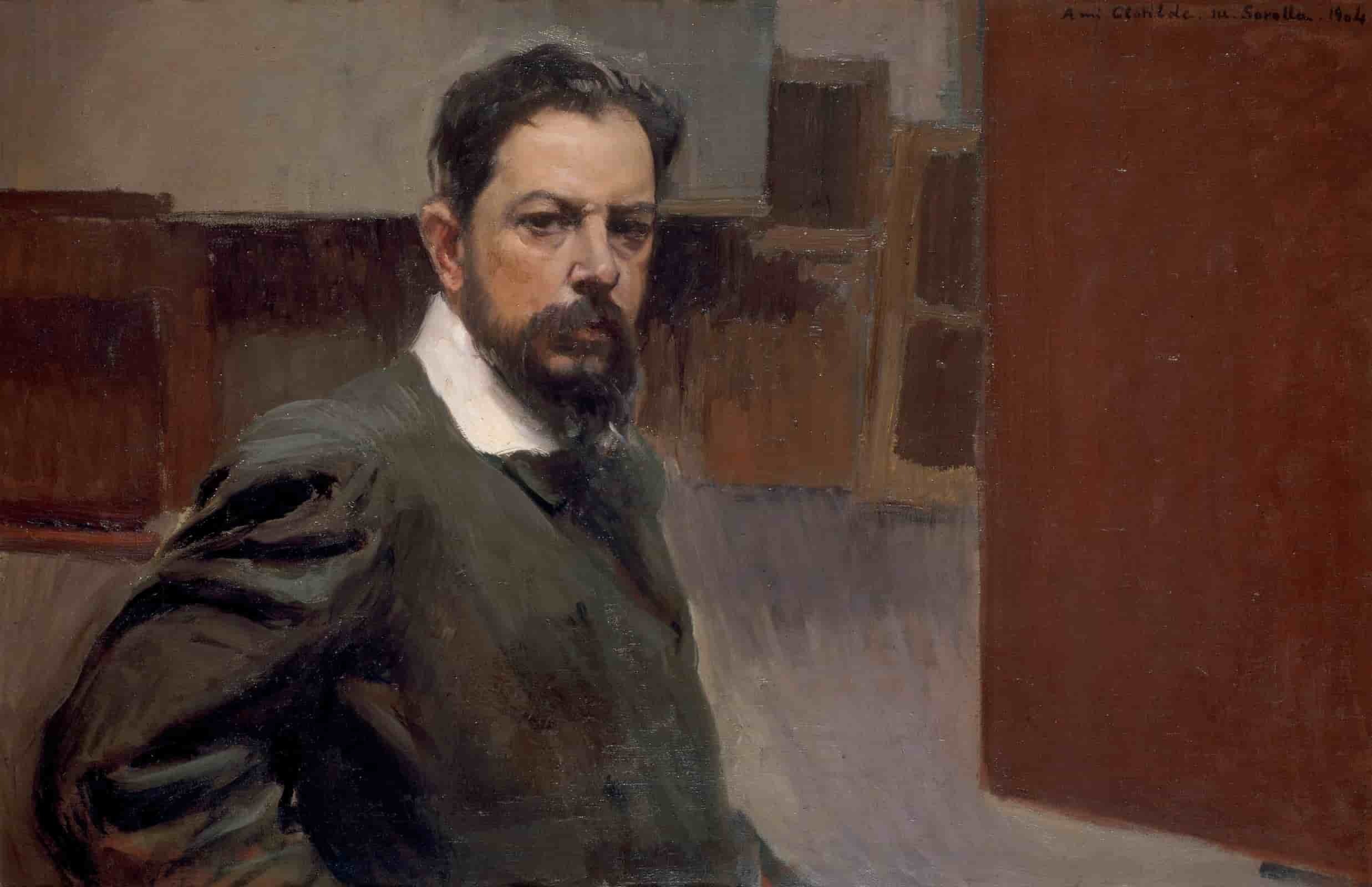

Joaquín Sorolla
ES
189
Artworks
1863 - 1923
Lifespan
Artist Biography
Joaquín Sorolla y Bastida, born in Valencia, Spain, on February 27, 1863, emerged as one of Spain's most renowned painters, celebrated for his masterful depiction of light and his vibrant scenes of Spanish life. Orphaned at the tender age of two following a cholera epidemic, Sorolla and his younger sister were raised by their maternal aunt and uncle. His prodigious artistic talent was evident early on; by age nine, he was receiving art education, and at fifteen, he was admitted to the Academy of San Carlos in Valencia. His formative years included further studies in Rome, funded by a grant, and a transformative sojourn in Paris in 1885, where he encountered modern painting, particularly the works of Jules Bastien-Lepage and Adolph von Menzel. In 1888, he married Clotilde García del Castillo, who would become his lifelong muse and a frequent subject in his paintings.
Sorolla's early career, after moving to Madrid in 1890, was characterized by large canvases exploring historical, mythological, and social realist themes. His breakthrough came with "Otra Margarita" (Another Marguerite, 1892), which garnered a gold medal at the National Exhibition in Madrid and first prize at the Chicago International Exhibition. This success was followed by "The Return from Fishing" (1894), admired at the Paris Salon and acquired by the French state, signaling the direction of his mature output. A pivotal work, "Sad Inheritance!" (1899), depicting crippled children bathing at the sea, earned him the Grand Prix at the Universal Exhibition in Paris in 1900. While this painting marked the culmination of his engagement with overt social themes, the preparatory sketches revealed his burgeoning interest in capturing shimmering light and a deftly handled medium, foreshadowing his celebrated luminist style.
Sorolla became known as the 'painter of light', excelling in capturing the brilliant Mediterranean sun and its effects on water, landscapes, and people, particularly on the beaches of his native Valencia. He predominantly painted en plein air, his canvases often bearing traces of sand, testament to his direct engagement with his subjects. His style, a variant of Impressionism often termed 'Luminism' or 'Sorollism', involved heavily impastoed pigments, vigorous brushstrokes, and a palette of brilliant colors to convey the intense light and atmosphere. International acclaim grew with a highly successful solo exhibition at the Galeries Georges Petit in Paris in 1906, which led to his appointment as Officer of the Legion of Honour. His 1909 exhibition at the Hispanic Society of America in New York City was a triumph, resulting in numerous sales and a prestigious commission to paint President William Howard Taft.
While formal portraiture was not his preferred genre, Sorolla produced numerous compelling portraits, often of his family, such as "My Family" (1901) and the radiant "My Wife and Daughters in the Garden" (1910). He found outdoor settings ideal for portraiture, capturing Spanish royalty like King Alfonso XIII and American figures such as Louis Comfort Tiffany in sun-dappled environments. His most ambitious undertaking was the "Vision of Spain," a series of fourteen monumental murals commissioned by Archer Milton Huntington for the Hispanic Society of America. Between 1911 and 1919, Sorolla traveled extensively throughout Spain, painting regional life, costumes, and landscapes en plein air. This colossal project, celebrating the diverse cultures of the Iberian Peninsula, consumed his later years and stands as a testament to his artistic vision and stamina.
Tragically, Sorolla suffered a stroke in 1920 while painting a portrait in his garden in Madrid. He remained paralyzed for three years and passed away on August 10, 1923, in Cercedilla. He was given a state funeral in Valencia, a testament to his status as a national hero. His widow, Clotilde, bequeathed many of his paintings and his Madrid house to the Spanish public, leading to the establishment of the Museo Sorolla in 1932. Sorolla's influence extended to a group of Spanish painters known as 'sorollistas'. Today, his works are housed in major museums worldwide, and his reputation for capturing the dazzling light and vibrant spirit of Spain with unparalleled skill and passion continues to grow, securing his legacy as one of the great masters of Spanish painting.